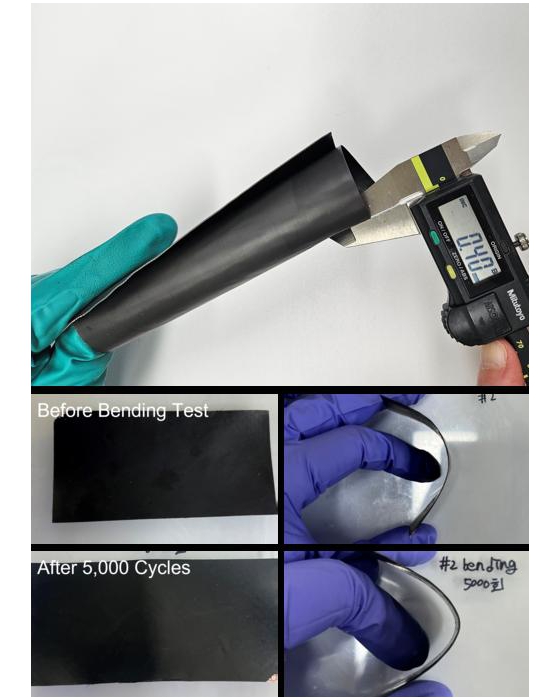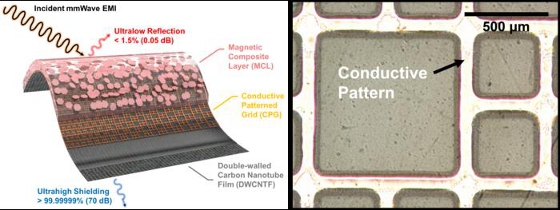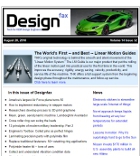 |
| November 05, 2024 | Volume 20 Issue 42 |
Designfax weekly eMagazine
Archives
Partners
Manufacturing Center
Product Spotlight
Modern Applications News
Metalworking Ideas For
Today's Job Shops
Tooling and Production
Strategies for large
metalworking plants
World first: Thin film absorbs 99% of electromagnetic waves
A research team in South Korea has developed the world's first ultra-thin film composite material capable of absorbing over 99% of electromagnetic waves from various frequency bands (such as 5G/6G, WiFi, and autonomous driving radar) using a single material.
This electromagnetic wave absorption and shielding material is less than 0.5 mm thick and is distinguished by its low reflectance of less than 1% and high absorbance of over 99% across three different frequency bands.

The electromagnetic wave absorption and shielding material developed by the research team, showing its thin and flexible form and its shape remaining intact even after 5,000 bending tests. [Credit: Korea Institute of Materials Science]
Electromagnetic waves emitted by electronic components can cause interference, leading to performance degradation in other nearby electronic devices. Electromagnetic shielding materials are used to prevent this, and absorbing electromagnetic waves is more effective at reducing interference than merely reflecting them. However, conventional electromagnetic shielding materials reflect over 90% of the waves, with an actual absorbance often as low as 10%. Moreover, materials with higher absorbance are typically limited to absorbing electromagnetic waves within a single frequency band.
To overcome these limitations, the research team of Dr. Byeongjin Park and Dr. Sang Bok Lee from the Composites & Convergence Materials Research Division at the Korea Institute of Materials Science (KIMS) developed a composite material that can absorb electromagnetic waves across multiple frequency bands simultaneously. This technology absorbs and eliminates electromagnetic waves, resolving secondary interference issues. The material is also thin, flexible, and durable enough to maintain its shape -- even after being folded and unfolded thousands of times -- making it suitable for use in rollable phones and wearable devices.

A conceptual diagram of the electromagnetic wave absorption and shielding material developed by the research team, along with the designed conductive pattern. [Credit: Korea Institute of Materials Science]
The team synthesized a magnetic material by altering the crystal structure of ferrite, enabling it to selectively absorb desired frequencies. They produced an ultra-thin polymer composite film and incorporated conductive patterns on the film's back side to control the propagation of electromagnetic waves. By adjusting the shape of the conductive pattern, electromagnetic wave reflection at specific frequencies can be dramatically reduced. Additionally, a carbon nanotube thin film with high shielding properties was applied to the back to further enhance the material's electromagnetic wave-shielding capabilities.
"As the applications of 5G/6G communications continue to expand, the importance of electromagnetic wave absorption and shielding materials is growing," said Park, the senior researcher who led the project. "This material has the potential to significantly improve the reliability of wireless communication devices such as smartphones and autonomous vehicle radars."
The research was funded by KIMS' fundamental research projects and the Electromagnetic Solution Integrated Research Group (SEIF) under the National Research Council of Science & Technology. The findings were published as the cover article in the Oct. 1 edition of the internationally renowned journal Advanced Functional Materials.
The research team has completed domestic patent registration and has also applied for patents in the United States, China, and other countries. Additionally, the technology has been transferred to several domestic material companies, and it is currently being applied to actual communication devices and automobiles.
Source: Korea Institute of Materials Science
Published November 2024
Rate this article
View our terms of use and privacy policy
